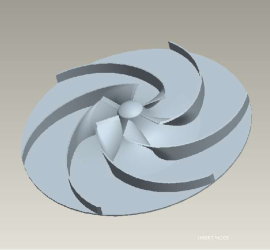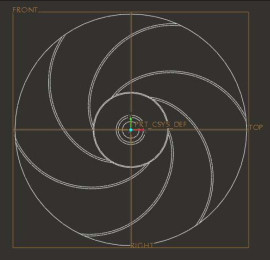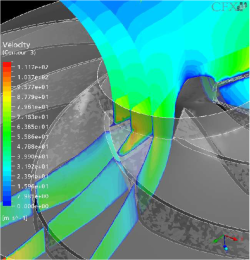
Caslav Ilic did his honours project at the Institute of Fluid Mechanics (LSTM – Lehrstuhl für Strömungsmechanik) in Erlangen under supervision of Prof. Durst.
Radial flow machines are extensively used in many fields of engineering, and their design and optimization has been the subject of many studies. It is common practice to optimize, in the sequence given below, various parts of radially working flow machines.
- The major dimensions are given in accordance to the application. First steps towards a radial blower design are made taking these dimensions into account.
- Collecting the motor and considering the application, the major design criteria regarding the rotational speed and impeller dimensions are made.
- In a next step, the diffuser is implemented by aiming at good overall performance of the radial flow machine.
Considerations at LSTM-Erlangen have shown that this approach does not yield an optimum design. It is therefore suggested to look at the design and optimization strategy in a more global way. A strategy needs to be developed that takes into account the overall design criteria, but then optimizes impeller and diffuser in a more integrated way. To this end, a new advanced coupled impeller-diffuser Euler approach is in development at the LSTM-Erlangen, applied to find the theoretical optimum design point of the impeller and the diffuser at once, operating as one flow machine unit. The design method is combined with full Navier-Stokes computations using commercial flow solvers to take losses in the design and layout into account.
In the presented project, this integrated approach was investigated and applied to existing and new impeller designs. The kind of information that was obtained from the project is indicated in computational results for radial turbo machines that are depicted in the given figures.
 |
 |
